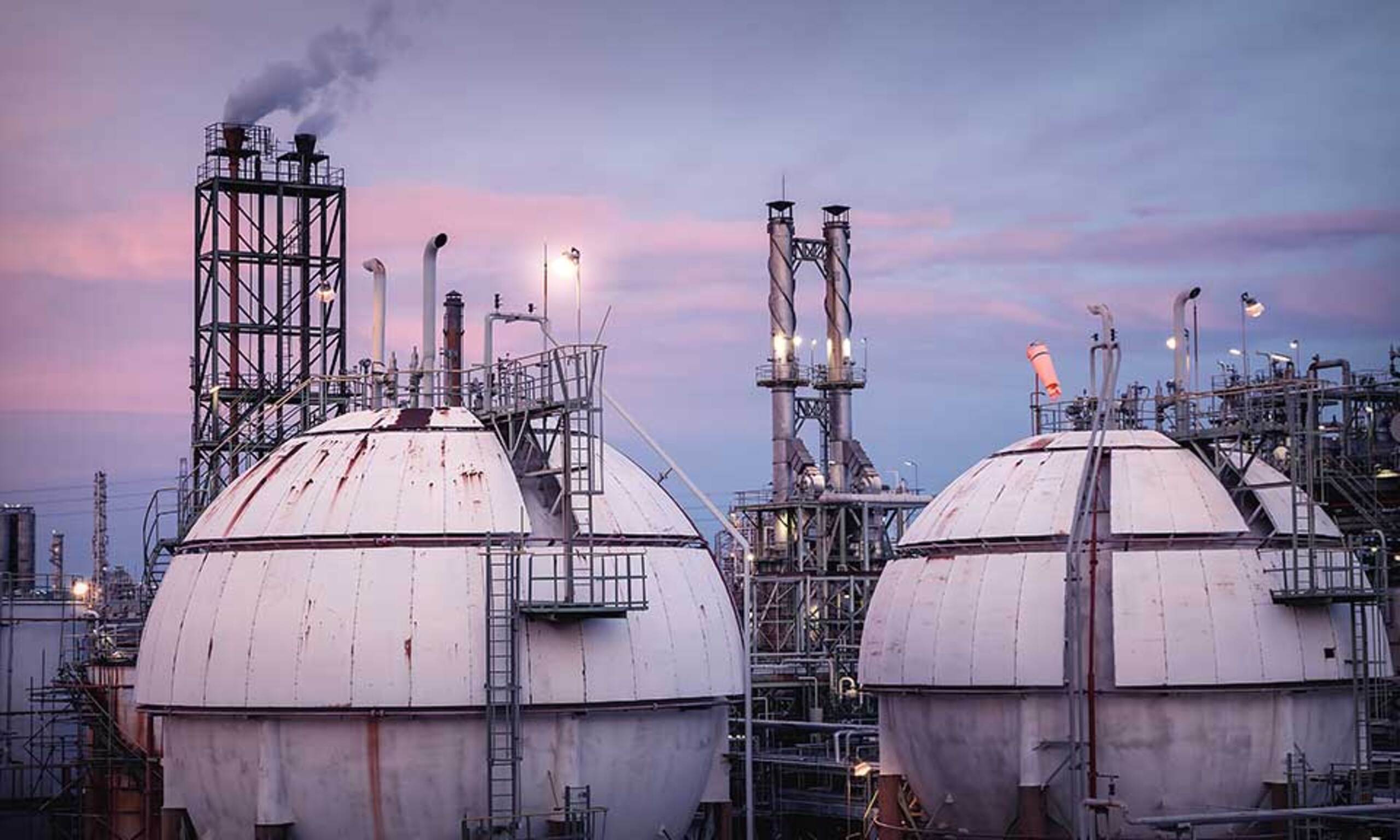Commodities 2023: Europe set for greater ethylene import attention amid energy volatility

The global ethylene market is widely expected to come under pressure in 2023 from weak demand, thin margins and volatile energy costs, though some market participants see a return of some pre-COVID normalcy.
While the US will look to increase its competitive advantage from lower feedstock costs, the European market's energy cost struggles are seen lingering within the more challenging global market that emerged in the second half of 2022.
With recession and higher inflation key concerns, European ethylene and derivative margins may to come under further threat in 2023. Also putting pressure on Europe are US exports as supply chain disruptions, sharply lower freight costs and the lack of extreme weather events allow the US to be competitive in Europe's higher cost market.
One European ethylene consumer said the surge in energy costs could be an existential threat to viability of the region's chemical production going forward.
"The delta between different parts of the world, was making Europe more expensive and was expected to lead to even more imports of a variety of different products," the consumer and derivatives producer said.
Asian ethylene also was expected to remain under pressure from feedstock volatility and weak derivative demand in 2023.
The demand outlook for early Q1 2023 has been bleak amid an overall slowdown in finished goods exports due to a weak economy, several market participants said, but could improve in Q2 as the peak season for several derivative markets typically starts in March and April.
Eyes also were on possible startups of new naphtha-fed steam crackers in China, as project delays amid manpower shortages and logistical issues due to the pandemic slowly clear up.
"If new crackers start on time and run at maximum, key ethylene exporters in Asia will definitely feel the heat as China is currently the largest importer. This will definitely put Asian producers under pressure," said a China-based trader.
Four new crackers with a cumulative capacity of 4.587 million mt/year were slated to come online in China in 2023.
In addition, Asian producers could see increased competition from the US, where producers have seen less downstream domestic demand, leaving more for exports.
"Ethane-based ethylene is simply more cost competitive, and with US producers looking to export material constantly, this will definitely impact trade flows in Asia if the US continues to ship ethylene over as naphtha is likely to remain volatile," said a trader based in Southeast Asia.
However, US ethylene exports were expected to remain maxed out in the first half of 2023, as they have been for much of 2022.
Enterprise Products Partners has operated its joint-venture 1 million mt/year ethylene export terminal at 120% to 125% of its nameplate capacity for much of the year. The company plans to expand that capacity by 50% in the second half of 2023, and double it to more than 2 million mt/year by 2025.
Ethylene margins could improve slightly going into 2023 if derivative demand rises, but downstream oversupply could mute a rebound.
Rob Stier, senior lead of global petrochemical analytics at S&P Global Commodity Insights, said the US ethylene market could see "a month or two of increased margins" in the first half of 2023 if derivative producers increase output to restock inventories after destocking through the end of 2022.
The global downstream monoethylene glycol price outlook remained mixed amid weak demand, economic uncertainty and rising costs, traders said.
Suppliers were bullish and said prices needed to move up in line with rising oil costs. However, traders said production cuts would continue until margins strengthened.
Demand in the downstream textile and polyethylene terephthalate bottle industries lagged behind MEG supply.
Asian trade sources said China will continue to target exports to Europe, as prices remained high in Europe.
"Europe and Asia, where naphtha is the dominant feedstock for crackers, will continue to see high production costs. Across the 2020-2023 time frame, global capacity grew by over 45 million tons versus a demand growth of just over 26 million tons. This is one of the main reasons behind the cyclical industry trough in 2023," according to Chemicals Insight APAC at S&P Global Commodity Insights.
In the US, with domestic demand expected flat and hefty antidumping duties still levied on exports to Europe, US suppliers were looking to find new or additional outlets for MEG for 2023.
In addition to confirming reduced run rates, Dow and Indorama Ventures said they would focus on higher-value applications than MEG for feedstock ethylene oxide, such as surfactants and polyurethanes.
"MEG is the weak spot in EO," said CEO Jim Fitterling during Dow's October Q3 earnings call.
In addition, in late October, India dropped its antidumping investigation on MEG imports from the US, Kuwait and Saudi Arabia, renewing attention for US export cargoes to the country.
News
Geopolitical pressures — including rising resource nationalism and a year in which over 50% of countries will be having elections — as well as inflationary pressures have sent energy transition progress into “discord.” A specialty chemicals panel session held March 19 at the World Petrochemical Conference by S&P Global in Houston, Texas, tracked the challenges and opportunities of the energy transition for the industry. Speaking at the session, Roman Kramarchuk, head of climate markets and policy analytics at S&P Global Commodity Insights, said that if the short-term scenario continues, global temperatures could rise 2.4 degrees Celsius by 2100, far above the Paris Agreement’s goal of a 1.4-degree increase. “Over the past few years, we’ve certainly been trending more towards our ‘discord’ scenario,” Kramarchuk said. “We’re trending toward a longer runway for fossil fuels and less [greenhouse gas (GHG)] emission reductions. This is a case of less GDP growth, less trade and less technology transfer.” Since 1990, world GHG emissions have grown 45%, with mainland China, India and the Middle East representing the biggest increases in emissions, at 304%, 241% and 181%, respectively. Over the last 25 years, the Commonwealth of Independent States and the EU have cut their emissions the most, with decreases of 39% and 31%, respectively. The US has cut emissions 1% since 1990. Of S&P Global Commodity Insights’ three energy and climate scenarios, only one, “green rules,” has global temperatures near the Paris Agreement’s 1.5-degree goa, with an expected increase of 1.7-degrees Celsius by 2100l. The “green rules” scenario, however, assumes more technology transfer, cooperation and policy-driven outcomes than is currently happening. “2030 is not that far away,” Kramarchuk said, “and when you think about what the energy transition will take, solar panels can be constructed fast, but anything beyond that — like an onshore or offshore wind plant or a nuclear unit — we’re getting into lead times of 5, 10, or 20 years.” While the US Inflation Reduction Act has helped speed these transformational energy products along, there are still a lot of slowdowns in permitting, especially in Europe. “We joke that there needs to be a ‘Complexity Reduction Act’ in Europe to move things forward,” Kramarchuk said. Harald Schwager, deputy chairman of Evonik Industries AG’s executive board, added that companies are stuck in a hard place. Evonik has signed power purchase agreements (PPAs) to be powered fully by renewable energy by 2030. “The question will be, will production capacity be hampered by the regulatory process and will we have sufficient infrastructure in place to transport enough renewable power for site demand by then,” Schwager said. Distant peaks Commodity Insights’ energy and climate base case pegs the peak years for coal, oil and gas demand to be 2022, around 2030 and 2040, respectively. “When there is a surprise need for energy,” Kramarchuk said, pointing toward the COVID-19 pandemic and a drought in China, which caused a boost in coal usage, “fossil fuels fill that need.” However, “there’s more investment in renewable capacity than we’re seeing in upstream oil and gas,” Kramarchuk said. Under all scenarios, renewable electricity will be the lion’s share of newly generated energy sourcing. Rebecca Liebert, president and CEO of Lubrizol Corp., said that it is the duty of specialty chemical producers to be agile and proactive in bringing innovative and more sustainable products to market. “Political and technical factors are all things we must account for in our bring-to-market timelines. And we get it right a lot of times, but we get it wrong some of the time. Sometimes you get to market before the market is ready for your product. And I think that’s great, to have a solution on the shelf as the market comes along.” Schwager agreed: “In the specialty chemical industry, we have more good ideas than we have money. And there’s no regret on moves for improved efficiency.” While there has been little movement on target setting and market-based mechanisms for growing renewable energy, COP28’s first global stocktake committee called for “countries to contribute to triple global renewable energy capacity and double global energy efficiency by 2030.” “Even though we are heading for the discord path right now, with all the technology solutions and innovation pushes, we’ll be shooting up ahead towards the ‘green rules’ scenario in the long-term,” Kramarchuk concluded. This article was first published in chemweek.com .

News
Two NGOs appealing against permits Initial plan was to start end of 2023 BASF is facing a delay of the operational start of its newly built precursor cathode active materials (pCAM) plant in Finland due to two non-governmental organizations (NGOs) appealing against already-granted permits, a spokesperson for the German petrochemicals company confirmed to S&P Global Commodity Insights Feb. 27. BASF initially aimed to start commercial production at the Harjavalta plant at the end of last year. “The necessary permit to operate this plant has been granted last year by the relevant authorities,” the spokesperson said. “However, two NGOs have filed an appeal against the already granted permit. Next steps and timing will depend on the furtherance of the judicial process before the Vaasa Administrative Court,” said the spokesperson. The pCAM plant will use renewable energy resources, including hydro, wind and biomass-based power and will be supplied with nickel and cobalt from Nornickel’s adjacent refinery. The plant is part of BASF’s plan to supply the battery industry and subsequently automotive industry with lower carbon emission cathode active material. Platts, part of S&P Global Commodity Insights, assessed cobalt metal in-warehouse Rotterdam at $15/lb on Feb. 26, stable from the previous assessment Feb. 23, while the nickel-cobalt black mass EXW Europe payables was at 54% Feb. 26, also stable.

News
The petrochemical landscape has been transformed in recent years by new technologies and the global energy transition, resulting in numerous production pathways and the development of more sustainable products. S&P Global Commodity Insights has created Chemical Connections , an interactive chart which shows the links between chemicals, from upstream feedstocks to derivative products. The second slide offers a map showing our price assessments and benchmarks for chemicals across the value chain around the world. These prices are used by market participants daily to write contracts, monitor their markets and achieve full transparency around transactions.